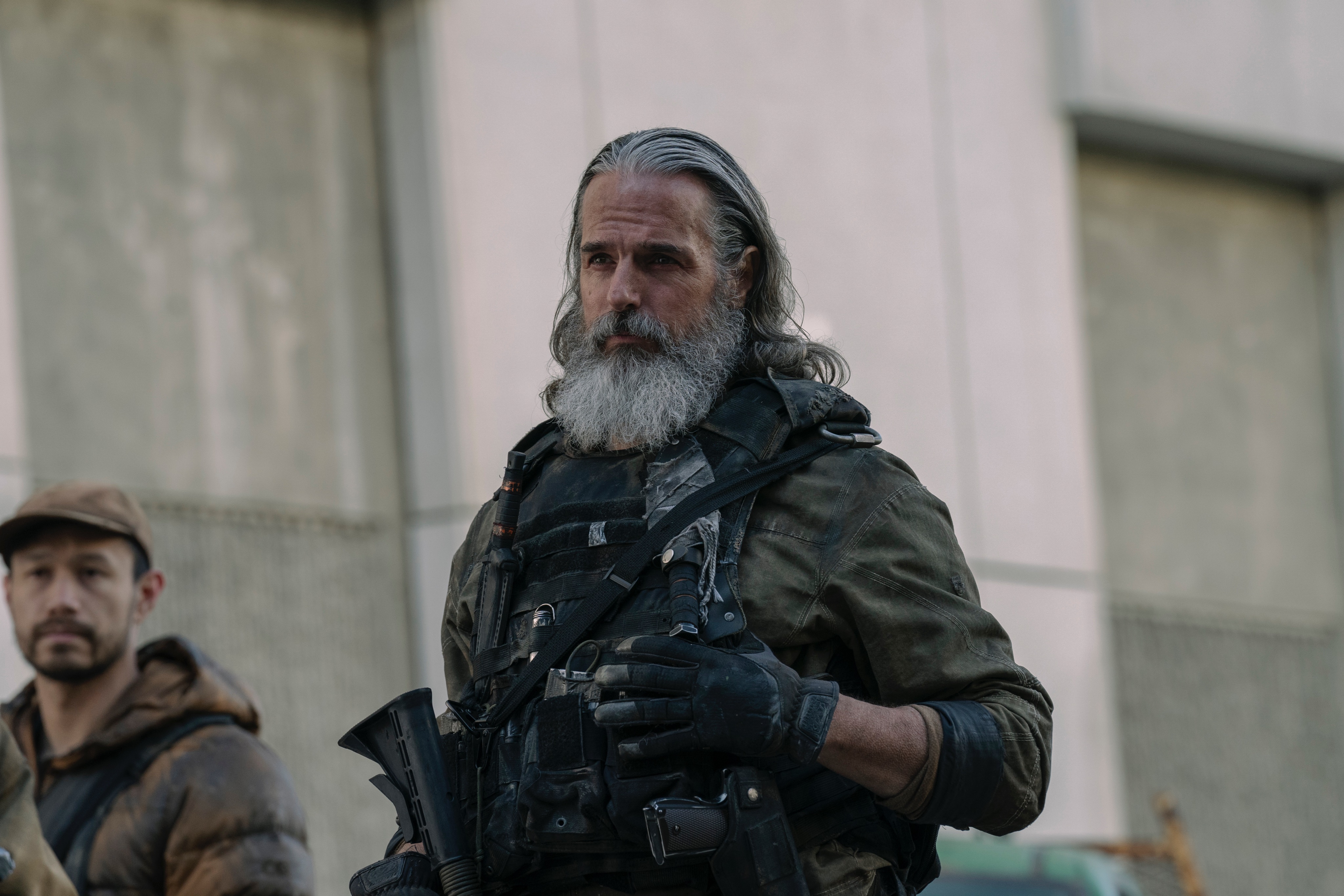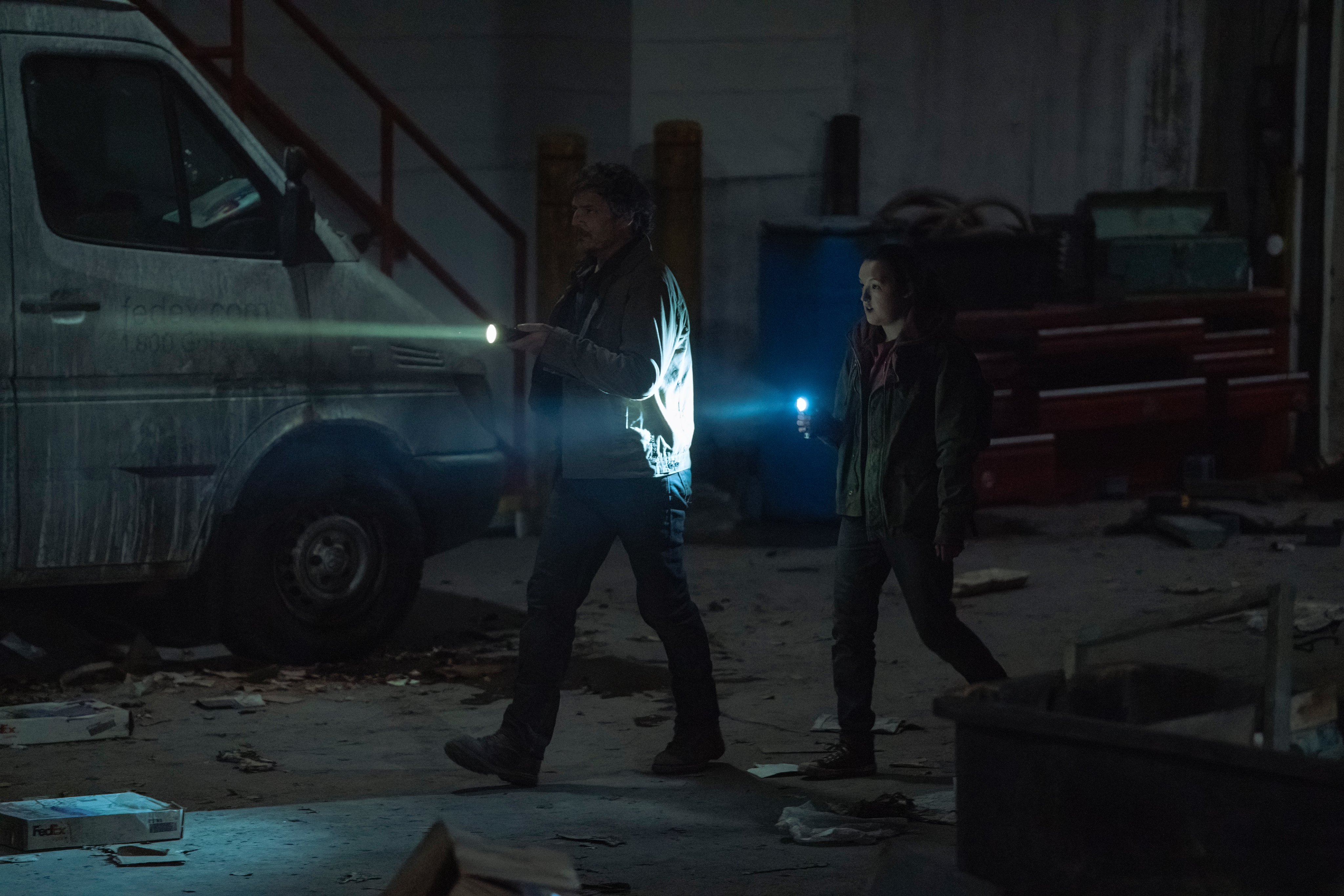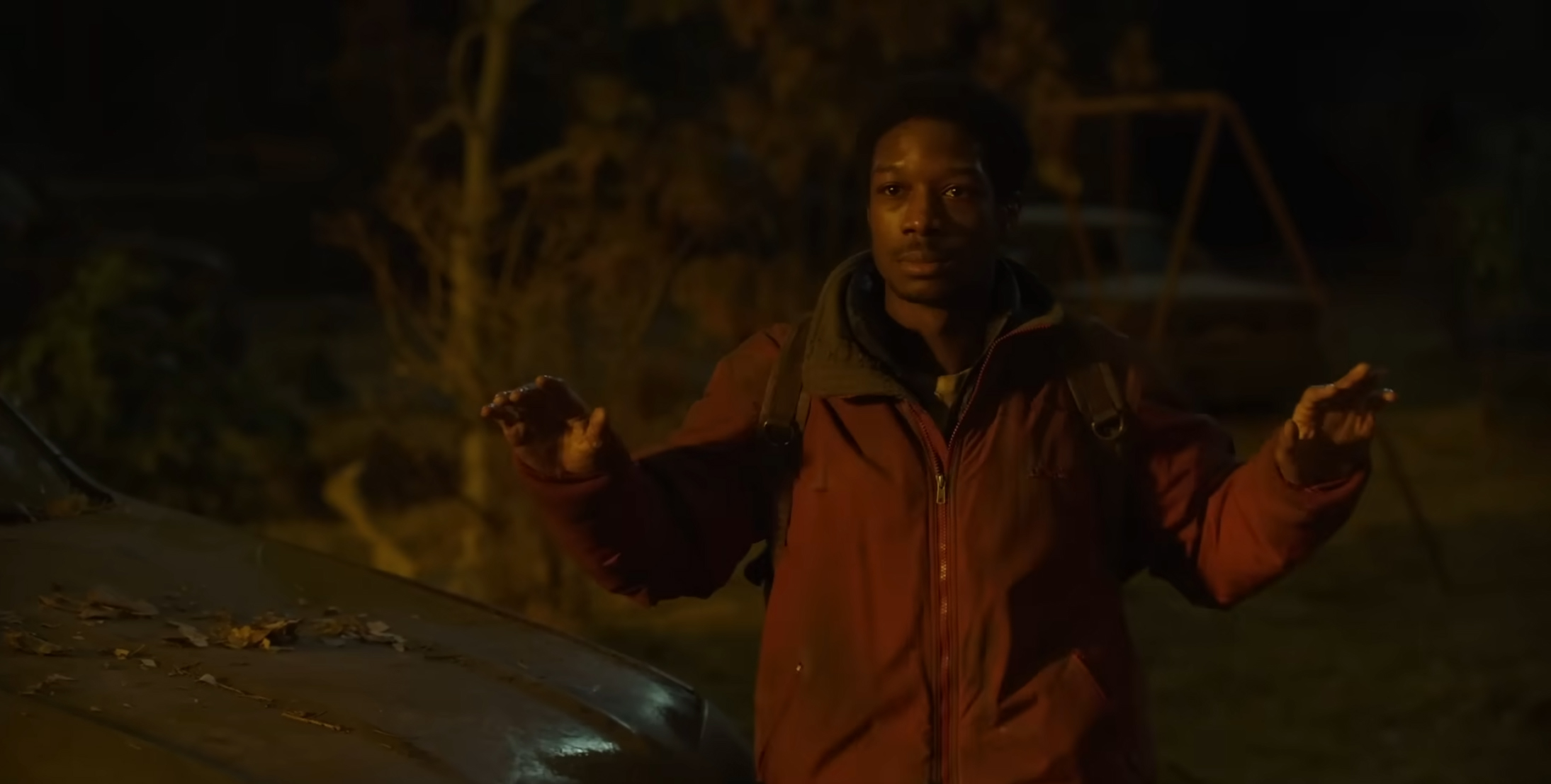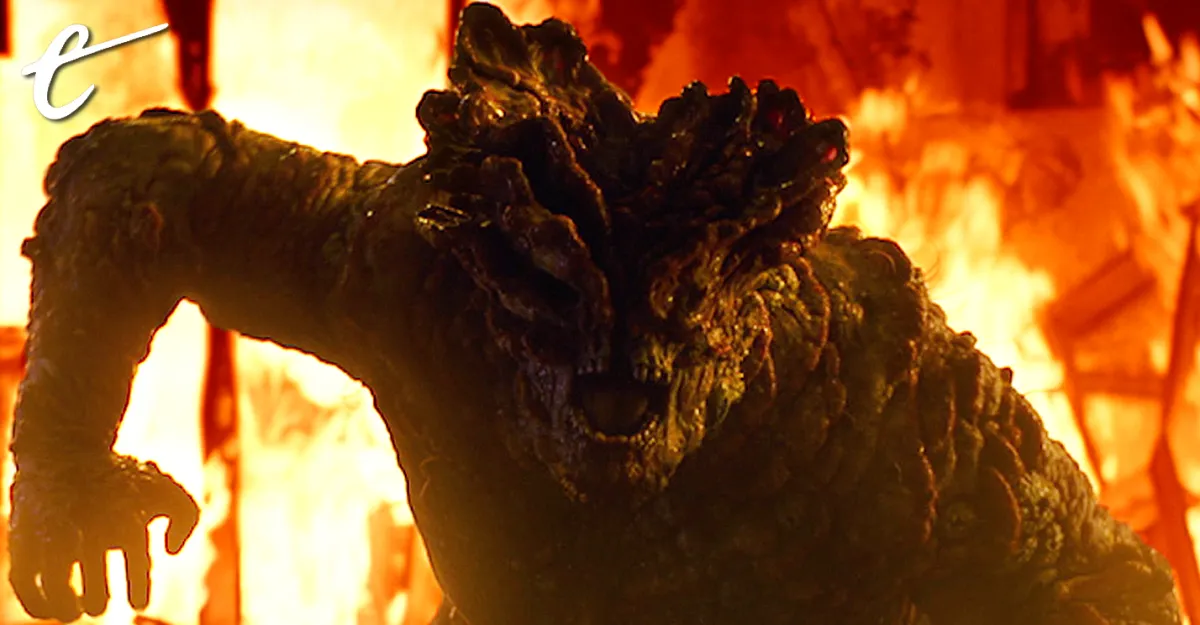This discussion and review contains spoilers for The Last of Us episode 5, “Endure and Survive.”
There is something to be said for a nice visual metaphor. There is also something to be said for structuring an episode to end with a nice visual metaphor that neatly mirrors its opening scenes.
As one might expect from a show largely written by Craig Mazin, the showrunner responsible for Chernobyl, there is a literary quality to The Last of Us. It is a show that is structured very deliberately and very carefully, with its supernatural elements structured as mirrors to its central driving themes. Despite its epic sweep and impressive scope, Mazin ensures that The Last of Us always remains intimate, a hall of mirrors reflecting back on Joel (Pedro Pascal) and Ellie (Bella Ramsey).
Of course, that’s not to suggest that The Last of Us can’t deliver in terms of spectacle. “Endure and Survive” is likely the most expensive episode of the season since the premiere and a testament to the money that HBO has invested in the show. It is largely set within a post-apocalyptic city. It opens with footage of a revolution, crowds engaged in violence and horror. It then builds to the largest showcase the series has offered to date for its infected, offering hordes of monsters swarming a small army.
“Endure and Survive” feels like a showcase for The Last of Us. Like the earlier episodes of the season, it’s running through a checklist of what audiences likely expect from a show set amid the zombie apocalypse: militias, gunfights, zombie attacks, violence, horror. However, as with “Please Hold to My Hand,” “Endure and Survive” is a little more elegant in how it deploys these tropes than “When You’re Lost in the Darkness” and “Infected” are. To bring it back to the show’s creative lineage, “Endure and Survive” is surprisingly literary.
It opens with depictions of a violent uprising in Kansas City, as the local population turns on FEDRA. The crowd chants “freedom” as the city descends into anarchy, a sequence with an inevitable and uncomfortable resonance after these past few years, even if FEDRA is an institution that deserved to be toppled. However, the episode builds to another more literal form of uprising at the climax, as sinkholes open up the “maintenance tunnels” beneath the city, and the infected swarm out.

Earlier in the episode, Ellie notes that there don’t appear to be any infected in Kansas City. Henry (Lamar Johnson) corrects her. “There’s infected — just not on the surface,” he explains. “FEDRA drove them underground fifteen years ago and never let them come back up. It’s the only good thing those fascist motherfuckers ever did.” They buried them deep down under the city. However, the problem with this approach is that buried secrets often make their way to the surface.
Most monsters are metaphors, and so are the stories about them. “Endure and Survive” is fundamentally built around that set piece of the swarms of infected rising up, and Mazin structures the script so the imagery works on multiple levels. On the most basic level, it’s a fairly clever literalization of Cordyceps as a fungal organism. It is something that lurks in the dark underground, just waiting for an opportunity to burst through the soil and extend its reach.
However, the social and political subtext of “Endure and Survive” isn’t buried particularly deep. Henry tells Joel that “KC FEDRA” were “monsters (and) savages” who “raped and tortured and murdered people for twenty years. You know what happens when you do that to people? Moment they get the chance, they do it right back to you.” The citizens of “Killer City” staged their own uprising against the people who pressed them down, and now the monsters do the same.
American zombie movies have always been stories of revolution, the fears of a society worried that the established order might be upended. Erin C. Cassese notes that George A. Romero’s Night of the Living Dead broke out as Americans were watching footage of “race riots in cities like Newark and Detroit.” Adam Lowenstein argues the film’s critical redemption hinged on its re-release as part of a double feature with Slaves, a movie explicitly about a slave revolt, a year after its initial release.

Zombies represent many different things, but they tap into the fear held by many people that there will come a reckoning for the established order, that groups of dehumanized individuals will eventually rise up to consume those who built a world atop them. This subtext continues through to the modern day. It plays out in The Girl with All the Gifts, a novel released the year after The Last of Us hit consoles. It’s a subtext especially apparent in the racebending in the cinematic adaptation.
“Endure and Survive” makes it clear that Mazin understands the zombie genre beyond its surface trappings. He understands the fears that underpin it. “Endure and Survive” is built around the metaphor of the underground, with Henry leading Joel and Ellie through the tunnels beneath the city. While exploring, they find an abandoned underground community. “I heard about places like this,” Joel reflects. “People went underground after outbreak day, built settlements.” These were people literally driven underground.
Like all good metaphors, this one works on (literally) multiple levels. It isn’t just social commentary; although it obviously exists in conversation with the genre’s history and contemporary American anxieties, it’s also a potent metaphor for the human drama that drives the show. “If you turn into a monster, is it still you inside?” Sam (Keivonn Woodard) asks Ellie, when he realizes that he has been bitten. He is talking about literally becoming a monster, but it also applies metaphorically.
The Last of Us is fascinated by the challenge of expressing humanity in a world that has become hostile to both humanity as a species and as a concept. In “Please Hold to My Hand,” Joel confessed to Ellie that he had done terrible things in order to survive. When she pressed him on whether he had ever killed an innocent person, he evaded the question. “Endure and Survive” opens with the revolutionaries engaging in the same sort of violence the infected employ at the episode’s climax.

Kathleen (Melanie Lynskey) has done terrible things. The episode opens with her arranging the mass murder of accused collaborators. She compares herself to her brother Michael, finding herself wanting. “He was so beautiful,” she admits. “I’m not. I never was. He would be horrified by the things I’ve done.” Perry (Jeffrey Pierce) points out that Kathleen’s willingness to do those things got results, “Your brother was a great man. We all loved him. But he didn’t change anything. You did.”
Everybody talks about Michael as a living saint. “There was a man, a great man,” Henry tells Joel. “He was never afraid, never selfish. He was always forgiving. Have you ever met anyone like that? The kinda man you’d follow anywhere?” However, just as Kathleen had to betray Michael’s ideals, Henry had to betray Joel himself. Henry acknowledges that this is a monstrous thing, confessing, “I am the bad guy, because I did a bad guy thing.” In its own way, humanity has to be buried deep.
Despite the epic scale of the events in “Endure and Survive,” things remain personal. As with “Long Long Time,” this is an episode largely built around a set of supporting characters that serve as funhouse mirrors of the show’s two credited leads. It is a literary device, but — given Pascal’s other obligations — it might also be a practical one. The episode breaks away from Joel and Ellie to tell a story from the perspective of Henry and Sam. Joel and Ellie are very much passengers on this adventure.
“Endure and Survive” opens by jumping back 10 days. It then filters some of “Please Hold to My Hand” through Henry and Sam’s eyes, following them up to the climax where Joel wakes up to find Sam pointing a gun in his face. Henry is obviously a mirror to Joel. Although he is Sam’s biological brother, he is a surrogate father. He sees something of himself in Joel. After confessing his crimes, he tells Joel, “You get it, though. You might not be her father, but you were someone’s. You see, I can tell.”

As ever, it is somewhat trite to talk about The Last of Us as a story about parenthood, but it is the central theme of the show. Henry tries to protect Sam from the horrors outside, just like Joel did with Ellie at the mass grave. “Look at me,” Henry instructs Sam. “Not that.” Later, he tells Edelstein (John Getz), “He saw a lot. Nothing I can do about that now.” Henry betrayed Michael to protect Sam, a decision that may indirectly have killed everybody in Kansas, as the infected race towards the city.
Kathleen is herself a dark mirror to both Henry and Joel. She has already lost her son Bryan (Juan Magana) and her brother Michael. However, she’s obsessed with them even in death, to the point that her chasing of Henry leads to the infected bursting out from beneath the city and prevents her from focusing on urgent priorities like the city’s rotting foundations. It’s easy to romanticize the idea of parents protecting their children, but The Last of Us suggests there’s something horrific as well.
“You think the whole world revolves around him?” Kathleen challenges Henry at the climax. “That he’s worth everything?” For better or worse, the answer is “yes.” That’s why Henry chose to betray Michael to save Sam, even allowing for the bitter irony that Sam ultimately doesn’t live much longer. It suggests that Joel might have to make some similarly tough choices about Ellie in the future. It’s also why Henry takes his own life after he has to kill an infected Sam.
Henry’s suicide by gunshot to his right temple at the end of “Endure and Survive” adds some interesting subtext to what we know about Joel. Joel has a scar on the right side of his forehead from a bullet wound just two days after the death of his daughter Sam (Nico Parker) and is deaf from the sound of gunshots near his right ear. Again, it’s a very clever and very literary parallel between the two men, suggesting that their journeys are more similar than they might initially appear.
“Endure and Survive” ends with Henry and Sam buried, while Joel and Ellie continue on their journey. They may stay underground, but it seems just as likely that Joel and Ellie will carry the pair with them for quite some time.






Published: Feb 10, 2023 10:00 pm